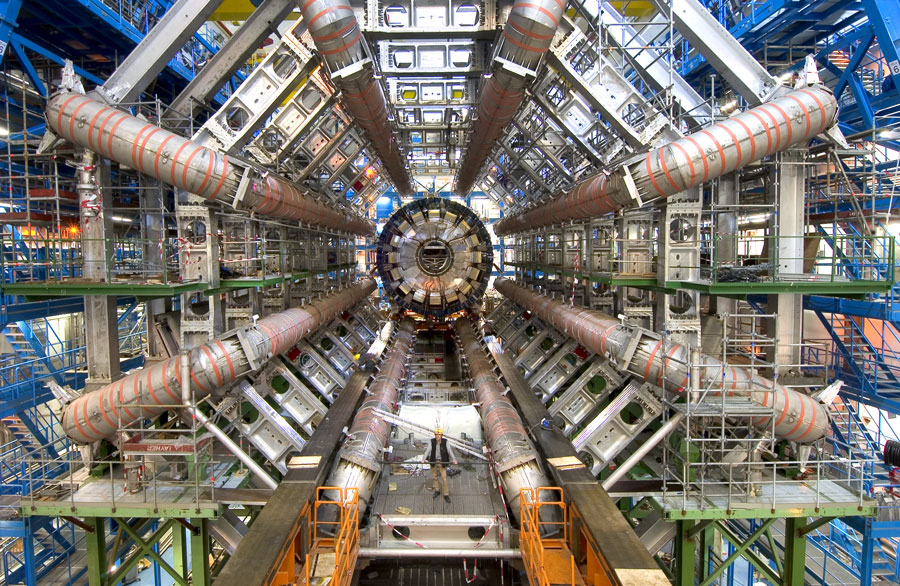Recently, you may have heard something about an elementary particle called the W boson. It probably caught your eye because it had a dire headline like “The Mass of the W Boson May Destroy Physics!” Upon reading it, you probably thought, “Well that’s just perfect; some nerd with a slide rule and a particle accelerator has gone and ruined our understanding of the four fundamental forces! And just when I’ve finally taken a few strokes off my golf game, too.”
I understand your concern—seems like every science story these days is about some kind of paradigm-shifting breakthrough that is going to change life as we know it. But in a few weeks, it’s all forgotten, and they’re on to the next “big discovery.”
This kind of frothy, breathless science journalism really wrinkles my press pass. We won’t stand for it here at the Planetary Broadcast Network—not on my watch. So let me set your mind at ease; this new information about the W boson is not the result of some kind of crazy scheme that’s unraveling the fabric of reality. In fact, the experiment that yielded this data was discontinued over a decade ago. The new report is simply a new statistical analysis of that data. It’s less about mad scientists slinging accelerated ions and protons about, and more about a ton of really dry mathematical calculations that came up with a slightly different number than the lab coat crowd was expecting.
To make this new analysis, researchers used the data from over 4 million W boson measurements taken at the Tevatron particle accelerator at the Fermi Lab in Batavia, Illinois. By slicing and dicing this data statistically and cross-checking their findings with many other calibrations, they believe they were able to come up with a more precise measurement of the W boson’s mass than previous efforts, meaning their findings have a lower margin of error.
If they’re right (which is a big “if”), then the values associated with other elementary particles will need to be reevaluated. The W boson and its buddy, the Z boson, are collectively known as the “weak bosons” because they mediate the weak nuclear force. In other words, the W boson’s mass is an integral part of the Standard Model, so if this finding is correct, then the existing measurements of many other parameters must be wrong. In other words, this could lead to a general refiguring of all the elementary particles, and a wholesale change in our understanding of the fabric of reality!
But… it probably won’t. More than likely, a less dramatic explanation for this anomalous W boson finding will be discovered. It could simply be that the researchers are overly optimistic about the precision of their findings, and that low margin of error won’t hold up to the scrutiny of other physicists. There is also the possibility that despite the large mass of data, this finding is simply anomalous, and not born out in other analyses.
Whatever the outcome, you can rest assured that the Planetary Broadcast Network will keep you abreast of the latest developments. Stay tuned, as we execute our sworn duty as standard bearers of the Fourth Estate, by making sure you have the knowledge you need to be an informed participant in our great democratic experiment.
Image Credits : www.nasa.gov

